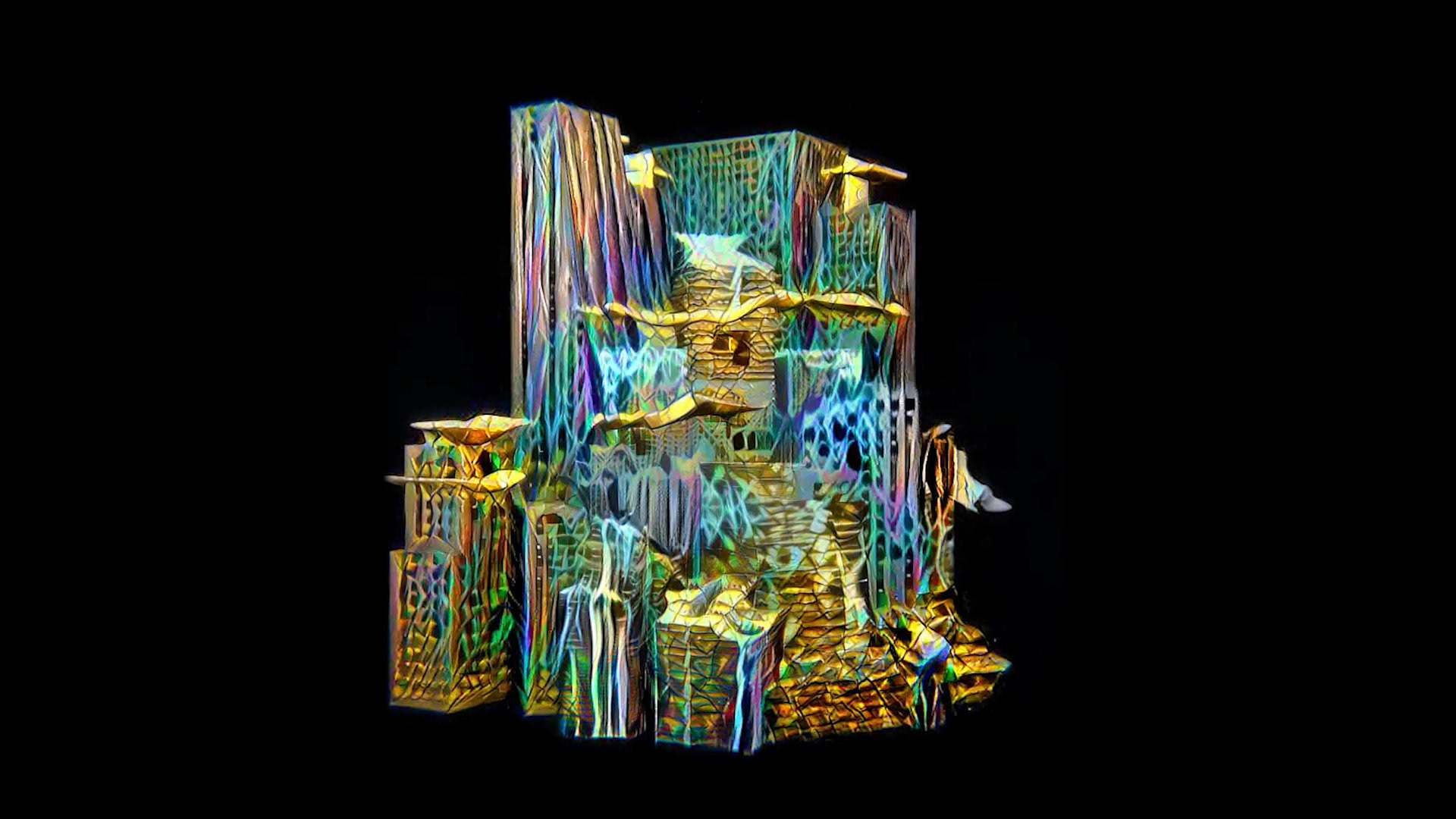The field of Artificial Intelligence (AI), already decades in development, is currently undergoing a reinvigorated boom due to its rapid adoption by developers, entrepreneurs and most recently by artists and architects. Simultaneously we face a series of consequences from man made climate change in architecture as well as a civilization that result in a shift of land use, migration and environmental politics.
In this context, the technology seminar explores the integration of emerging AI algorithms and tools into a speculative analysis of architecture and its context in the age of Big Data and Anthropogenic Climate Change. The course is about urban form and its relationship to landscape. Therefore, we analyze existing urban models and landscapes that will be more inhabitable as a result of global climate change. Through vast datasets, we are able to train similarities, patterns, and singularities of architectural and environmental structures to an autonomous Machine Learning (ML) algorithm. Subsequently, ML is tasked to generate speculative architectural proposals that are based on the machines interpretations of the datasets.
As a result, the machine intelligence suggests new depictions and hybridizations of cityscapes in post-anthropocentric environments. While AI is a generative driver in this process, students are participating and steering the design by curating the datasets in the notion of human-machine collaboration. Building up on that, we focus on emerging modes of computational design within ML as an opposition to governing regimes of parametricism.
이미 수십 년째 발전하고 있는 인공지능(AI) 분야는 개발자, 기업가, 그리고 가장 최근에는 예술가와 건축가의 빠른 채택으로 인해 현재 다시 활기를 띠고 있다. 동시에 우리는 인간이 건축에서 기후변화와 토지이용, 이주, 환경정치의 변화를 초래한 문명으로부터 오는 일련의 결과에 직면한다.
이런 맥락에서 기술세미나는 빅데이터와 인공기후변화 시대의 건축과 그 맥락에 대한 추측적 분석으로 떠오르는 AI 알고리즘과 도구의 통합에 대해 탐구한다. 이 과정은 도시 형태와 풍경과의 관계에 관한 것이다. 따라서, 우리는 지구 기후 변화의 결과로 더욱 살기 쉬워질 기존의 도시 모델과 풍경을 분석한다. 방대한 데이터셋을 통해 우리는 건축과 환경구조의 유사성, 패턴, 특이점 등을 자율 기계학습(ML) 알고리즘으로 훈련시킬 수 있다. 이후, 데이터세트의 기계 해석에 근거한 추측성 구조 제안서를 작성하기 위해 ML이 과제된다.
결과적으로, 기계 지능은 후인류 중심적 환경에서 도시 경관의 새로운 묘사와 혼합을 제안한다. 이 과정에서 AI가 생성 동력이지만, 인간과 기계 간 협업이라는 개념으로 데이터세트를 큐레이션하는 방식으로 학생들이 참여하고 디자인을 운용하고 있다. 그것을 바탕으로, 우리는 파라메트릭리즘의 지배체제에 대한 반대로서 ML 내의 새로운 컴퓨터 설계 모드에 초점을 맞추고 있다.
이런 맥락에서 기술세미나는 빅데이터와 인공기후변화 시대의 건축과 그 맥락에 대한 추측적 분석으로 떠오르는 AI 알고리즘과 도구의 통합에 대해 탐구한다. 이 과정은 도시 형태와 풍경과의 관계에 관한 것이다. 따라서, 우리는 지구 기후 변화의 결과로 더욱 살기 쉬워질 기존의 도시 모델과 풍경을 분석한다. 방대한 데이터셋을 통해 우리는 건축과 환경구조의 유사성, 패턴, 특이점 등을 자율 기계학습(ML) 알고리즘으로 훈련시킬 수 있다. 이후, 데이터세트의 기계 해석에 근거한 추측성 구조 제안서를 작성하기 위해 ML이 과제된다.
결과적으로, 기계 지능은 후인류 중심적 환경에서 도시 경관의 새로운 묘사와 혼합을 제안한다. 이 과정에서 AI가 생성 동력이지만, 인간과 기계 간 협업이라는 개념으로 데이터세트를 큐레이션하는 방식으로 학생들이 참여하고 디자인을 운용하고 있다. 그것을 바탕으로, 우리는 파라메트릭리즘의 지배체제에 대한 반대로서 ML 내의 새로운 컴퓨터 설계 모드에 초점을 맞추고 있다.






